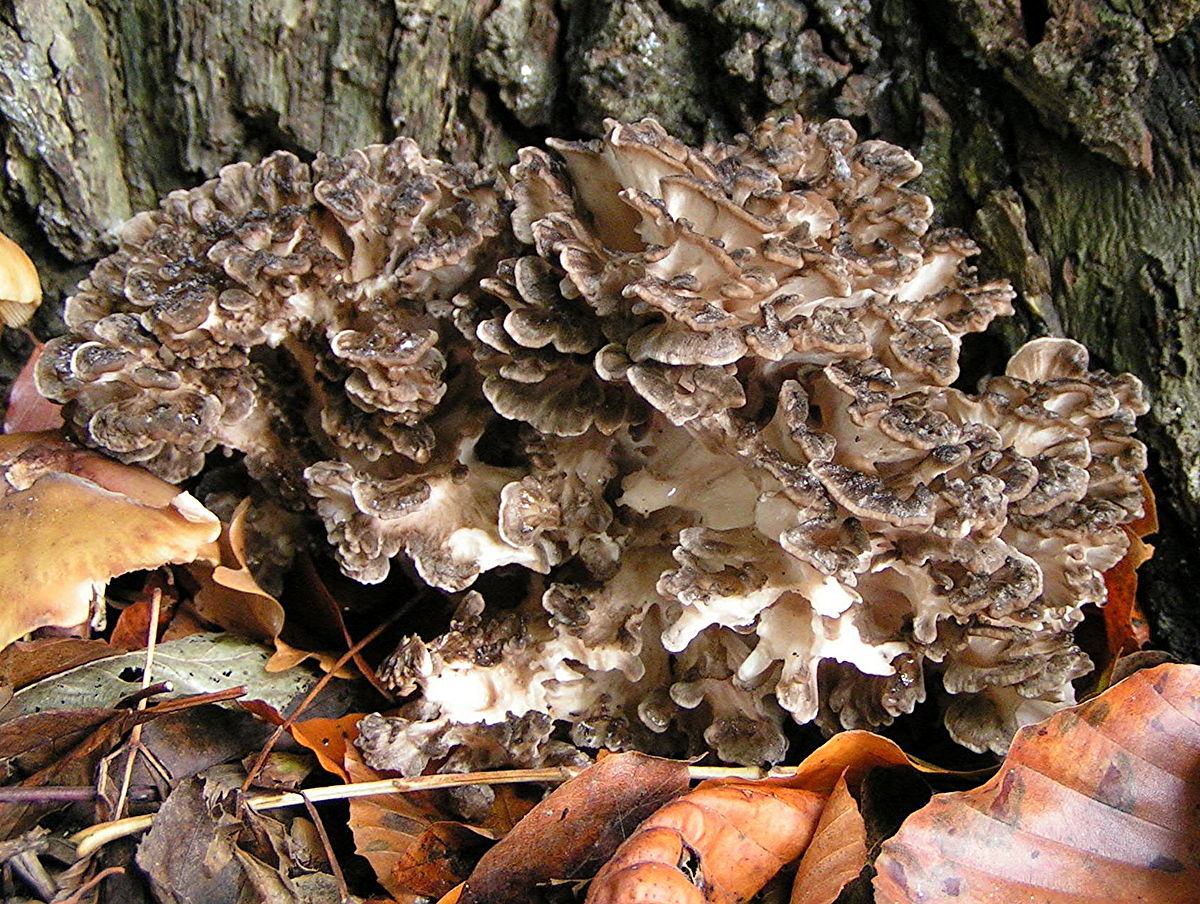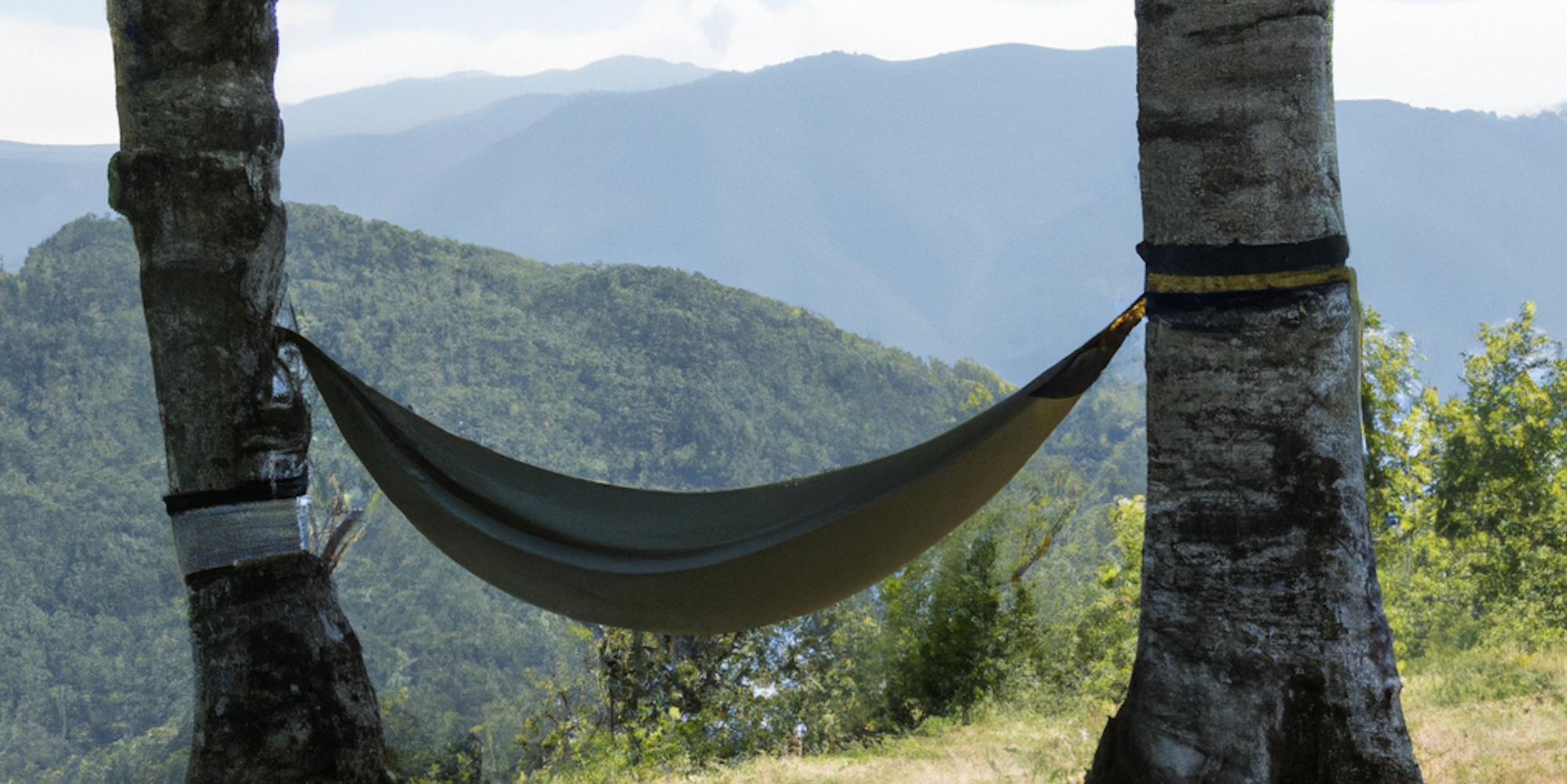Table of Contents
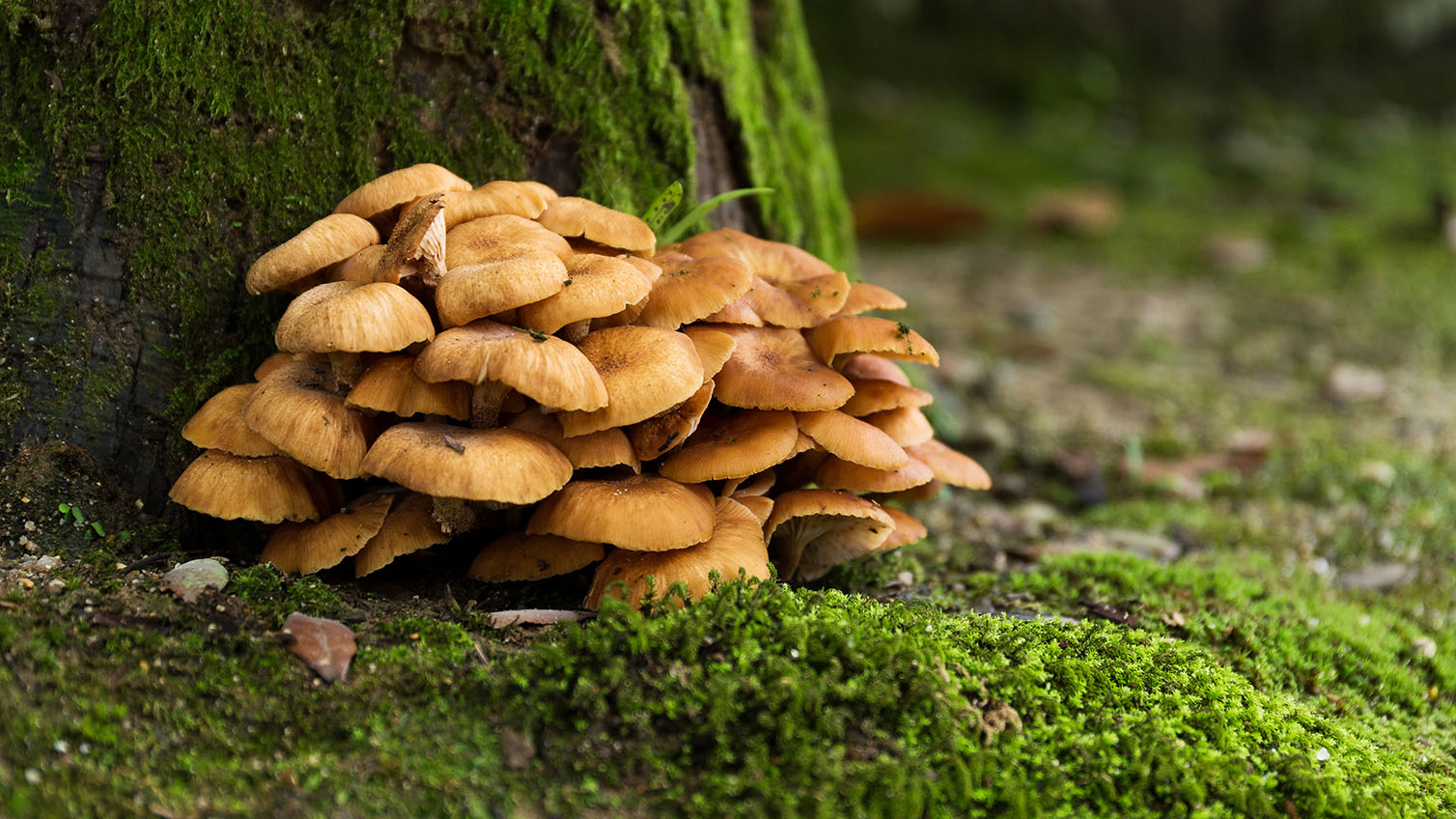
Best Fall Mushrooms To Forage in the Appalachians
For some Mushroom Foragers, there is no better place to be than the Appalachian mountains in the Autumn season. With its lush and diverse forests, it can truly be a Mushroom paradise. That is if you know what you’re looking for!
I’ll be frank, Mushroom Hunting isn’t always just a simple walk in the woods. It’s also more than being able to identify a mushroom. To be an expert, it takes an ecological understanding of the forest and the mushrooms you seek. It also takes time, experience, and many outings exploring your local woods.
Autumn Mushrooms in the Southern Appalachian
The Southern Appalachians are one of the most biodiverse parts of the United States. Its rainy climate, diverse topography, and complex soils make it an exciting place for nature enthusiasts. This includes mushroom foragers!
This guide is focused on foraging mushrooms you can find in the mountains North Georgia, Tennessee, and North Carolina.
Much of this is thanks to the grand diversity of mushroom plant hosts. In particular, the Southern Appalachians are home to many plants that form mycorrhizal relationships.
Mycorrhizal relationships are a form of symbiosis that occurs between the roots of plants and fungi. While 95% of plants form mycorrhizal relationships, only around 5% form relationships with mushroom-forming fungi!
Oak Trees are renowned hosts of mycorrhizal mushrooms. With almost 60 different species of Oak Trees in the Southern Appalachian, mushrooms abound! For this reason, getting to know your local Oaks will be CRUCIAL in becoming an expert mushroom forager.
What are Common Autumn Mushrooms That Grow in the Appalachian Mountains
Inexperienced foragers use caution! Verify your IDs with skilled Mushroom Enthusiasts and only consume when you are 100% sure! We do not take responsibility for misidentified mushrooms!
Chicken Of The Woods (Laetiporus sulphureusƒ)
The name says it all. It’s a mushroom that tastes, feels, and resembles chicken!
What habitat does Chicken of the Woods grow in?
Chicken of the Woods usually grows on the sides of large Oaks. Often on dead trunks or branches, but it can occur directly from living trees.
How hard is it to identify Chicken of the Woods?
Easily Identifiable
- You can spot Chicken of the woods from far away by looking for bright yellow growths on Oak trunks.
- It’s usually flat, semicircular, and is orange with a softer/yellow growing edge.
- It smells a bit like popcorn, butter, and for some folks urine.
- It can kind of be “shredded” like chicken.
- The underside has microscopic pores.
Misc Info: Make sure to only harvest soft tissues! Otherwise, it can be difficult to digest. Mild digestion issues are common in some people, so only eat a little your first time. Some prefer boiling it first to increase digestibility.
Turkey Tail Mushrooms (Trametes versicolor)

By James Lindsey at Ecology of Commanster, CC BY-SA 3.0, Link
Turkey Tail is one of the most famous medicinal mushrooms. It has been used traditionally for thousands of years and is currently still used by many cultures. It’s immune-boosting, anti-cancerous, and helps with a variety of chronic diseases. It’s best prepared as a tea or tincture.
What habitat does Turkey Tail grow in?
Occurs on dead woody material, usually Oak. Can also occur on Maple, Walnut, Ash, Aspen, Fruit Trees, and a variety of other woods.
How hard is it to identify Turkey Tail?
Easily Identifiable
- Turkey Tail mushrooms grow in large groups.
- Usually directly on trunks, branches, and tree stumps.
- They are circular, flat, and can display striated, color patterns on the top surface.
- The under surface is white, flat, and has microscopic pores.
You can identify the lookalike Stereum by the large pores visible to the naked eye. You CANNOT see the pores on Turkey Tail Mushrooms.
Misc Information: They can be dried and stored for long periods.
Indigo Milk Cap (Lactarius indigo)
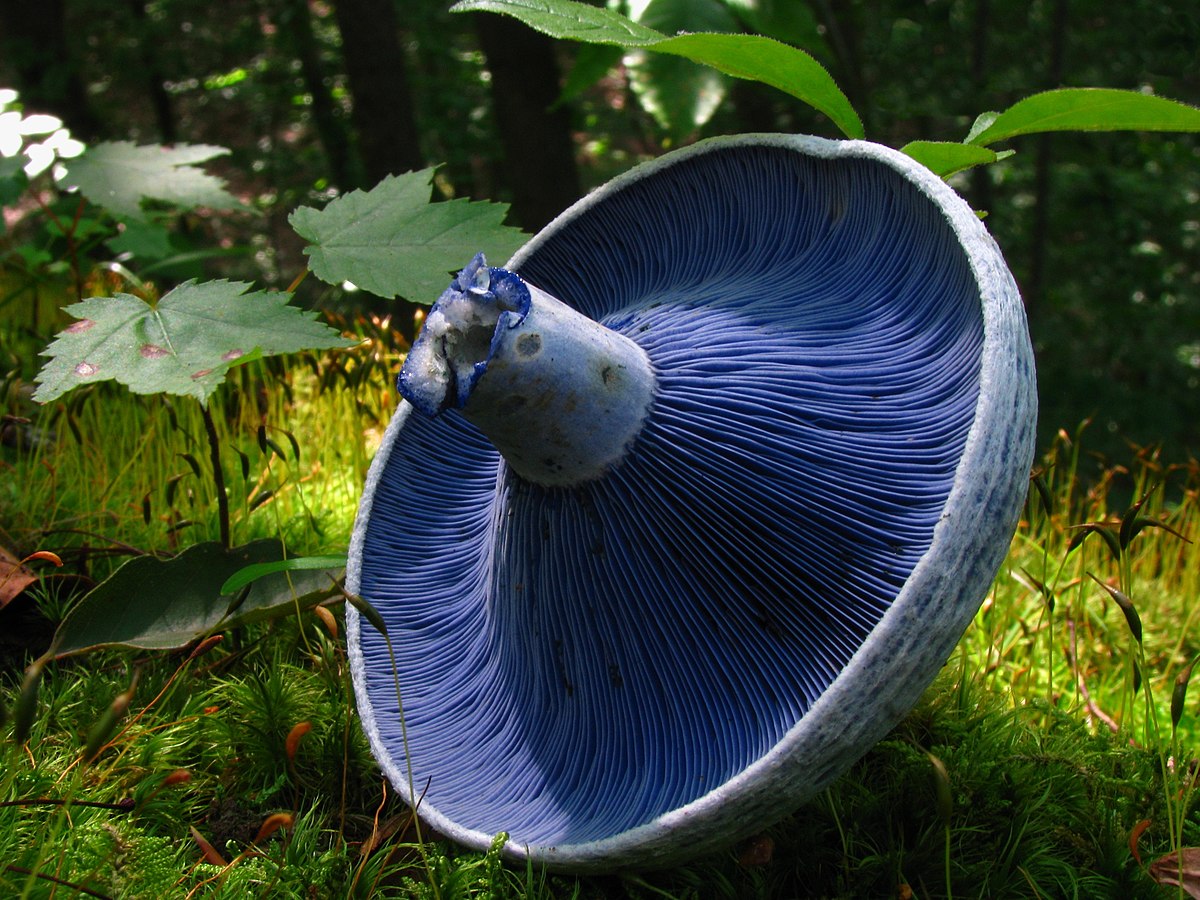
By Dan Molter, CC BY-SA 3.0, Link
Indigo Milk Caps are some of the most stunning and impressive mushrooms that you can find. The Southern Appalachian Mountains are probably the best place to find these in the country.
What habitat does Indigo Milk Cap grow in?
Mycorrhizal with Oak. Usually, you find groups between 4-10 specimens.
They grow directly from the ground, sometimes under the leaf litter so be careful where you step!
How hard is it to identify Indigo Milk Cap?
Easily Identifiable
- Fresh specimens are a luscious blue color that fades to grey as they age.
- Usually grow to be 4-6” in size.
- The cap tends to have concentric rings of blue on the top surface.
If you have any doubts, damage the mushroom tissues and watch for stunning blue milk that oozes!
Misc Information: They are considered a choice edible and will give your food a blue color!
Lion’s Mane (Hericium erinaceus)

By Lebrac, CC BY-SA 3.0, Link
Lion’s Mane is one of the most sought-after mushrooms in the fall. It is not only a choice edible but is a HIGHLY regarded Medicinal. It has become popularized recently due to Lion’s Mane health positive effects for your body and brain.
What habitat does Lion’s Mane grow in?
Typically grows on the trunks of Oaks but may grow on larger branches. May occur on living or dead trees.
How hard is it to identify Lion’s Mane?
Easily Identifiable
- They grow as white, round, and “brain-like” growths on the side of living or dead trees.
- Size varies anywhere from the size of a hand to the size of a human torso!
- When young they are spherical but with age, they begin developing long dangling hair-like features from their entire body.
- Older specimens will begin turning yellow and become bitter.
- They may occur as single specimens or have multiple fruiting bodies.
Misc Information: Lion’s Mane is delicious. If you want to make medicine it’s recommended to dehydrate them first. There are also various close relatives such as Hericium corraloides and Hericium americanum. These look very similar but tend to have a branching structure instead of being spherical.
Black Trumpet (Craterellus fallax)
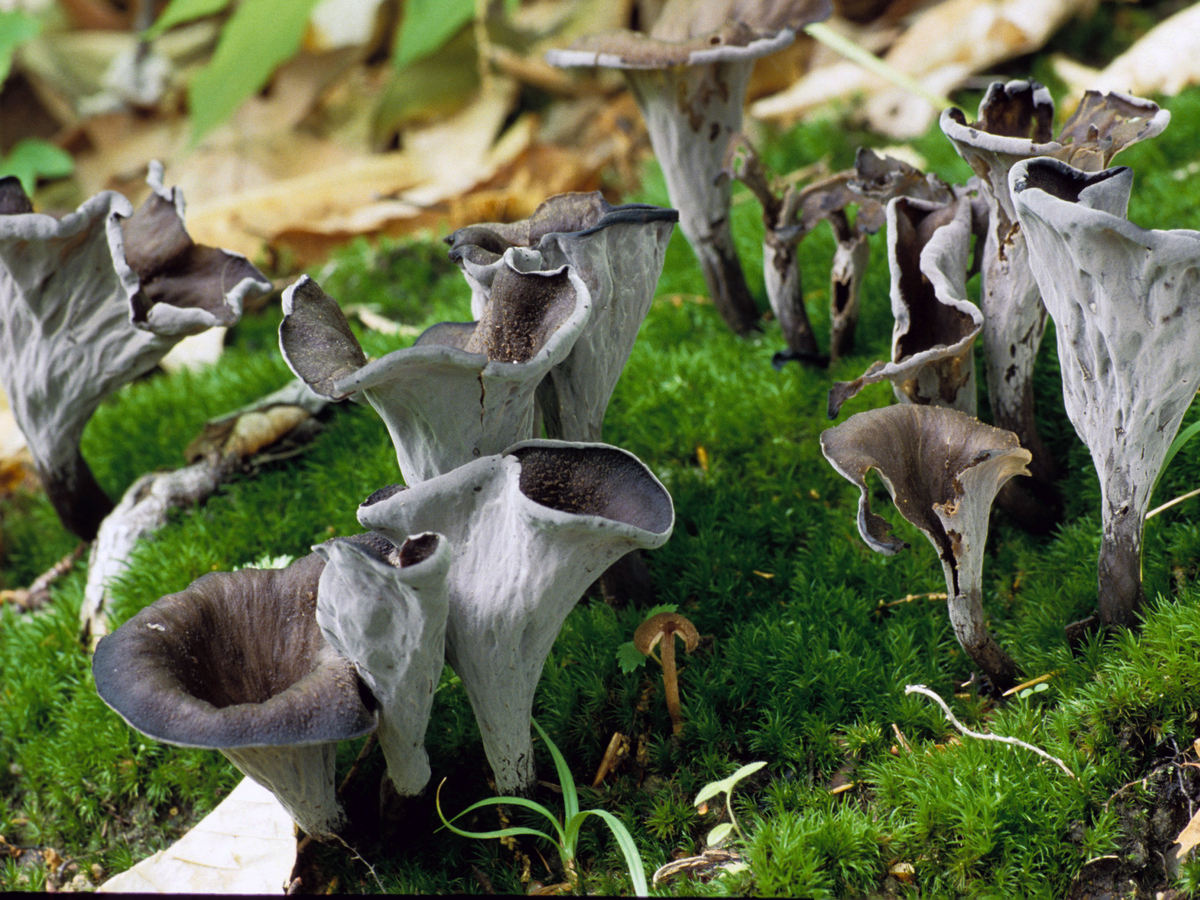
By Jsunseri85, CC BY-SA 4.0, Link
What habitat does Black Trumpet grow in?
Mycorrhizal with Oak. Grows in clusters that often form dense patches. Commonly found in disturbed roadsides and on the sides of trails. Consider walking slowly because their dark color makes them hard to see! Hot Tip: Pisgah National Forest is a known hotspot.
How hard is it to identify Black Trumpet?
Easily Identifiable
- Black Trumpets are essentially shaped like small (2-8”) hollow tubes that are grey on the inside and black on the outside.
- Their tissues are thin and papery, with a rubbery consistency.
- Their smell is subtle but slightly fruity.
- Sometimes you can find them with a pink-powder color.
Misc Information: Black trumpets are delicious and store well dried.
Oyster Mushrooms (Pleurotus osteroises)
Oyster Mushrooms are some of the most well-known edible mushrooms. While commonly cultivated, they can also occur in the wild. Sometimes in extraordinarily LARGE Quantities.
What is the Oyster Mushroom habitat?
Dead rotting hardwood. This can be stumps, branches, or fallen trunks. Usually on Oak, but can also occur with Ash, Maple, and a variety of other wood types.
How hard is it to identify Oyster Mushroom?
Medium Difficulty To Identify
- Oysters are usually white/gray and grow in clusters.
- The stem usually grows from one side, nearly fusing with the cap.
- The diagnostic feature for Oyster Mushrooms is the decurrent gills.
Decurrent gills are those that fuse and run down the stem of the mushroom instead of stopping abruptly.
Misc Info: Make sure to get them fresh as they easily get infested with maggots! Also, keep your eyes out for related species: Pink Oysters and Golden Oysters.
Maitake aka Hen Of The Woods (Grifola frondosa)
By Pethan, CC BY-SA 3.0, Link
Maitake or Hen of the Woods is a choice edible mushroom that occurs at the base of trees. It can sometimes be found in absurdly large quantities! Aside from being a gourmet edible, it is also a highly regarded medicinal.
What habitat does Maitake grow in?
Grows at the base of trees, most commonly Oak. It is often pathogenic and is a sign of “butt rot”.
How hard is it to identify Maitake?
Medium Difficulty To Identify
- Maitake is NOT a typical stem and cap mushroom.
- Mushrooms can be large (<25”) and always occur at the base of trees.
- Forms flat, layered, coral-like clusters.
- The color is grey fading to white at the stems.
- The underside is lighter in color and smooth with small pores.
- The stems are white and become tough as the mushroom ages.
Misc Info: This mushroom is edible but also considered a potent medicinal. While its effects are still being studied, its thought to have a diverse set of effects. This includes anti-tumor properties, immune-enhancing, hormone regulation, and helping against chronic diseases.
Ceasars Amanita (Amanita ceasarea complex)
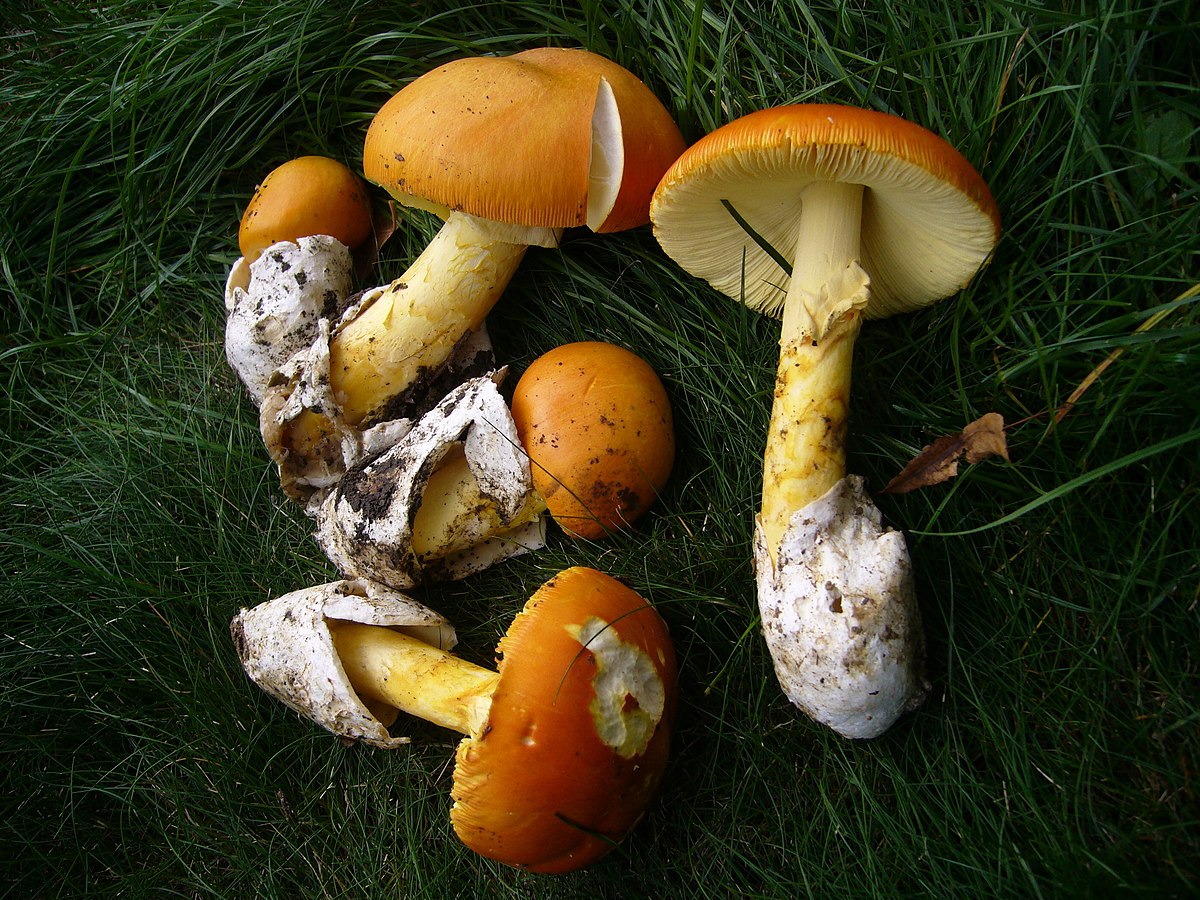
By Yaqui CC BY-SA 3.0, Link
What habitat does Ceasars Amanita grow in?
Mycorrhizal with Oak. Grows directly from soil usually near or under Oaks.
How hard is it to identify Ceasars Amanita?
Difficult due to potentially toxic lookalikes.
Identification is easy, but be cautioned that there are some toxic lookalikes! There are a few varieties of this mushroom, most predominantly foragers find a variety called Jacksons Cesar.
- The mushroom “hatches” from a white egg.
- Cap is exceptionally shiny red/orange cap when young.
- It may or may not have a piece of white cottony tissue on the cap (reminisce from the egg).
- As it ages it will usually keep the bright red color in the center of the cap which becomes lighter in color towards the margins.
- The stem surface is orange and has an uneven patchy texture.
- The mushroom has a ring or skirt which covers the gills when young.
- Gills will have an orange coloring, this is important to distinguish them from lookalikes!
Misc Information: It is incredibly delicious but be careful! It can be easily confused with the Fly Agaric (Amanita muscaria).
Red Chanterelles (Cantharellus cinnabarinus)

By S0urLuc1d, CC BY-SA 3.0, Link
These are some of the most delicious of all mushrooms. They’re pretty small and a huge effort to collect, but are worth every bit!
What habitat does Red Chanterelle grow in? These are mycorrhizal with Oaks. They grow directly from the soil and usually occur in groups. They may hide under leaf litter.
Season: Summer-Autumn
How hard is it to identify Red Chanterelle?
Easily Identifiable
- They’re small (2-4”), bright red, and often have wavy caps.
- They have a fruity smell resembling apricots.
- Gills are widely spaced and often short in stature. They will often just look like raised ridges.
Community Resources
Here are a couple of resources that foragers and mycologists can use to get connected to their local mycology communities.
Social Media Groups
I HIGHLY recommend using the help of the online community to get started on your journey to learning wild edible mushrooms. If you don’t have Facebook, it may be worth it just for this reason!
Facebook Groups and Forums are not only great to help you ID your finds, but they also let you know what’s fruiting in your region. In many cases, it’s also a great place to find out about local mushroom events. Below there is a list of Facebook groups that you may find helpful.
- Georgia Mushrooming
- Tennessee Foragers & Mushroom Hunters
- Tennessee Mushroom Hunters
- Tennessee Mushroom Identification
- North Carolina Mushroom Group
- NC Mushrooms
- Mushroom Identification
- The Mushroom Identification Group
- Southern Appalachia Edible Wild Plants
INaturalist: Mushroom Identification App and Much More
INaturalist is much more than an identification app. It’s a database, social media, and documentation tool that provides many neat features.
While it does do image-based ID recommendations, it also uploads your observations to the INaturalist database. Here it tags your photo, location (you can keep this secret or distorted), date, and all the details about your observation. Here experts participate in helping with identifications and researchers may use your information for studies.
The other amazing tool it has is the “Explore” feature. Using this tool you can select a region of your choice and see all the observations made within the boundary. You can also add a filter to only show you the observations of fungi or even an individual species. This allows you to see what people are finding in your specific area!
Below are some relevant links to help you get a hang of the website.
